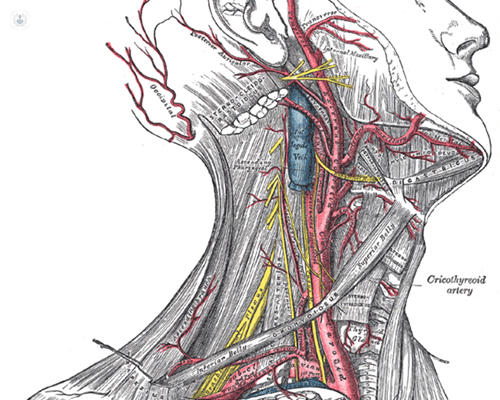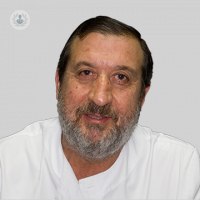Endarterectomy (EDA) or carotid thromboendarterectomy (TEA), applications and uses
Written by:Carotid thromboendarterectomy (TEA) is the surgical technique consisting of, once a cutaneous incision is made at the inner border of the sternocleidosmastoid muscle of the neck, the carotid bifurcation composed of the primitive or common carotid artery is dissected or controlled internal and external. After heparinization -preventing blood coagulation by heparin -to the patient and closing proximally and distally these arteries with special clamps called clamps, the bifurcation (arteriotomy) is opened and the origin of the external carotid artery is "cleaned" (thrombectomy) injury of the internal carotid artery by removal of the plaque from cholesterol and / or calcium that occupies the lumen of the arteries (endarterectomy). Once this is done, it is closed, either directly or by using a patch that may be artificial or from a vein in the patient's body. This intervention in our environment is performed with local anesthesia, and after 12 hours in the ICU is discharged the next day.
When is it necessary for a patient to undergo an endarterectomy or a thromboendarterectomy?
Patients who may benefit from this intervention are those who have a stenosis (closure) of light of the internal carotid artery greater than three quarters that have or have not presented some type of neurological symptom derived from that stenosis. Logically, it will be necessary to do a preoperative and evaluation of the possible benefits and possible complications that may arise.

When is the use of an Endarterectomy or Thromboendarterectomy not recommended?
Carotid revascularization - irrigating the part of the brain dependent on that artery - can be enhanced by three techniques: EDA, open or traditional surgery, endovascular techniques, angioplasty (ATP) and / or stents and bypasses or bridges. If we talk about the EDA and its contraindications we could refer to two situations; a clinic, which would involve a high surgical risk, patients with important cardiological or general pathologies and the other, technique; with the presence of very high lesions, hostile necks, highly calcified arteries, etc.. In these cases you could opt for an endovascular or medical treatment.
How long is estimated for recovery after an Endarterectomy or Thromboendarterectomy?
As mentioned above, if there is no complication, the patient is discharged from hospital and can perform a completely normal life.
Does a person who has had a carotid endarterectomy have to change their lifestyle after recovering from surgery?
Not at all, since precisely the intervention has been practiced so that your brain receives more blood and can make a completely normal life.
For more information, consult a specialist in Angiology and Vascular Surgery


